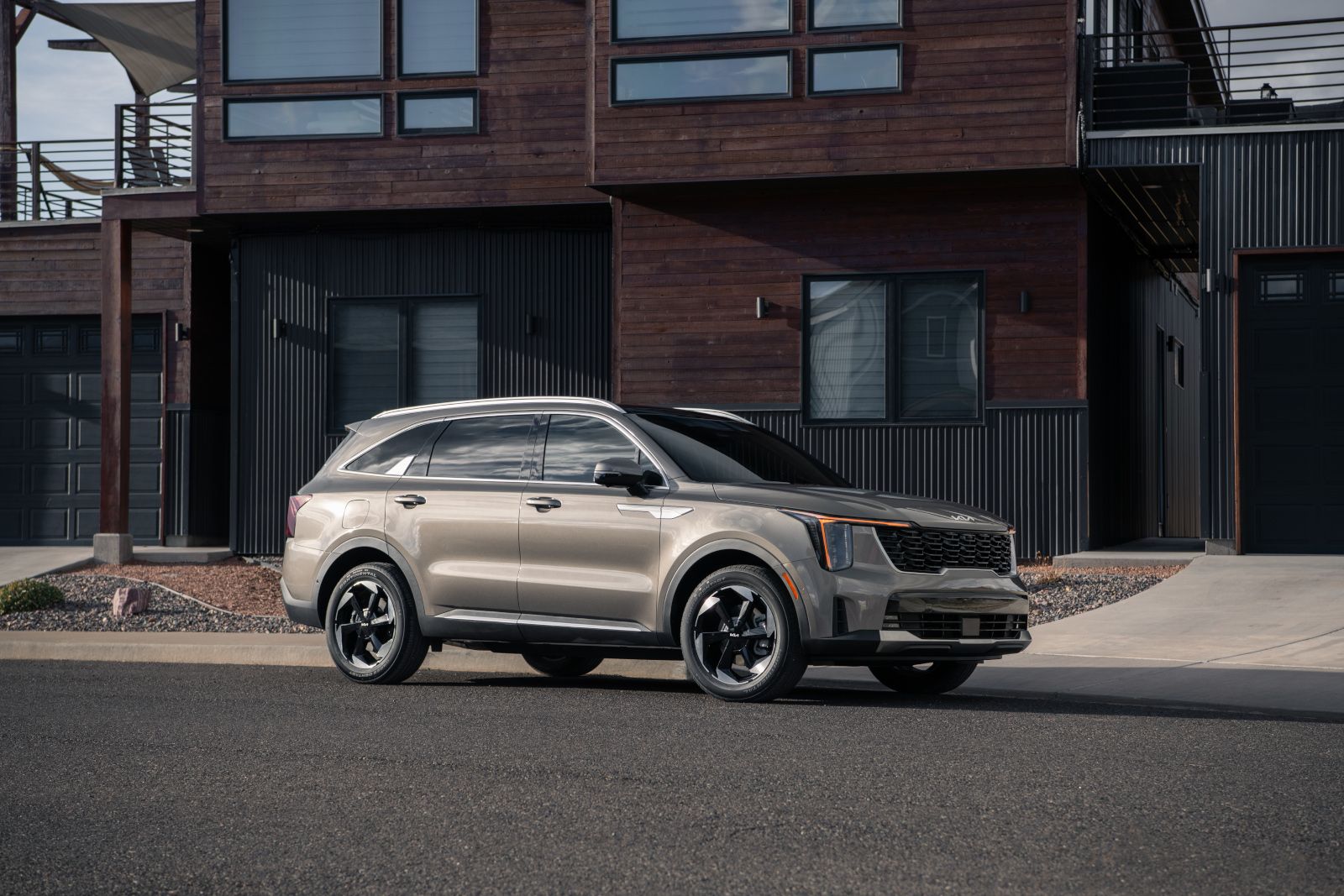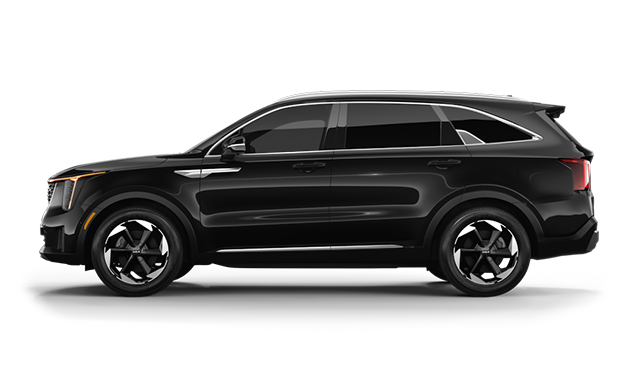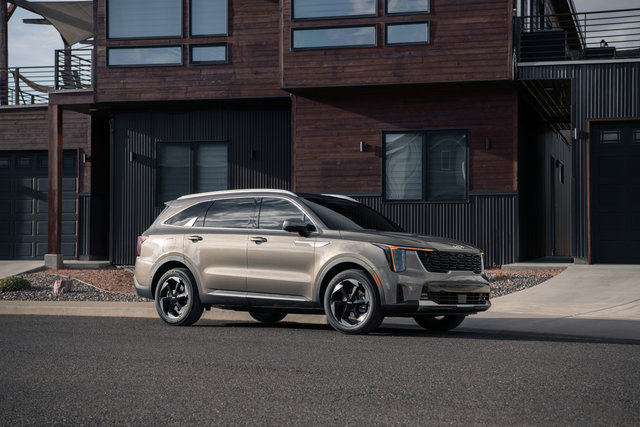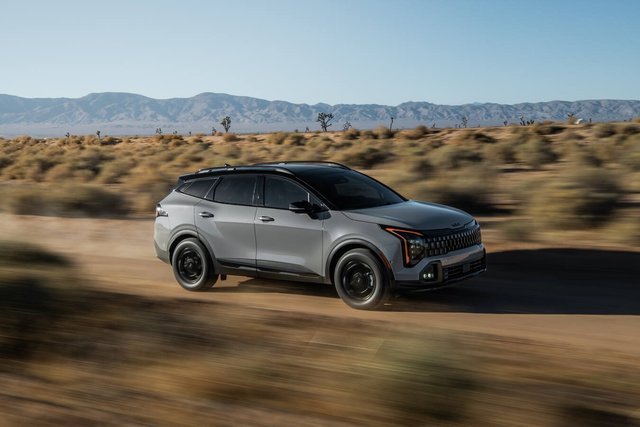Finding the right three-row SUV for your family involves more than just counting seats. Today's buyers want efficiency without sacrificing capability, which is where the 2025 Kia Sorento's electrified powertrains come into play. While the Sorento lineup also includes a traditional gasoline engine, this comparison focuses on the two hybrid options: the Sorento HEV (Hybrid Electric Vehicle) and PHEV (Plug-in Hybrid Electric Vehicle). Both electrified models offer compelling advantages, but they serve different family lifestyles and driving patterns.
Understanding these differences helps Ontario families make informed decisions about which technology suits their daily routines, commuting needs, and long-distance travel requirements. The choice between maximum simplicity and maximum electric-only driving capability often comes down to how and where you drive most frequently.
At a Glance: Sorento HEV vs. PHEV
|
Feature
|
Sorento HEV
|
Sorento PHEV
|
|
Engine
|
1.6L Turbo 4-cylinder
|
1.6L Turbo 4-cylinder
|
|
Combined Power
|
227 hp
|
261 hp
|
|
Torque
|
258 lb-ft
|
258 lb-ft
|
|
Electric Range
|
N/A (self-charging)
|
48 km
|
|
Fuel Tank
|
67 L
|
47 L
|
|
Charging Required
|
No
|
Yes (optimal performance)
|
|
Towing Capacity
|
1,650-2,000 lbs
|
1,650-2,000 lbs
|
|
Best For
|
Hassle-free hybrid efficiency
|
Maximizing electric-only trips
|
Performance and Efficiency Breakdown
The Sorento HEV produces 227 hp through its 1.6L turbocharged 4-cylinder engine paired with a permanent magnet synchronous electric motor. This system operates seamlessly, switching between electric and gasoline power based on driving conditions without any input from the driver. The 270-volt lithium-ion polymer battery recharges automatically through regenerative braking and engine operation.
The Sorento PHEV takes the same base engine but adds more powerful electric components, resulting in 261 hp of combined output. The larger 360-volt battery provides up to 48 km of all-electric range, allowing many daily commutes and local trips to run entirely on electricity. When the battery depletes, the system operates like a conventional hybrid.
Both systems use a 6-speed automatic transmission and standard all-wheel drive, ensuring consistent performance across different driving conditions. The additional power in the PHEV model provides slightly more responsive acceleration, particularly during electric-only operation.
Key Performance Highlights:
- HEV offers maintenance-free hybrid operation with no charging requirements
- PHEV provides 34 hp more power and potential for gas-free local driving
- Both models maintain the same 1,650-2,000 lb towing capacity
- All-wheel drive comes standard on both powertrains
Interior and Technology Features
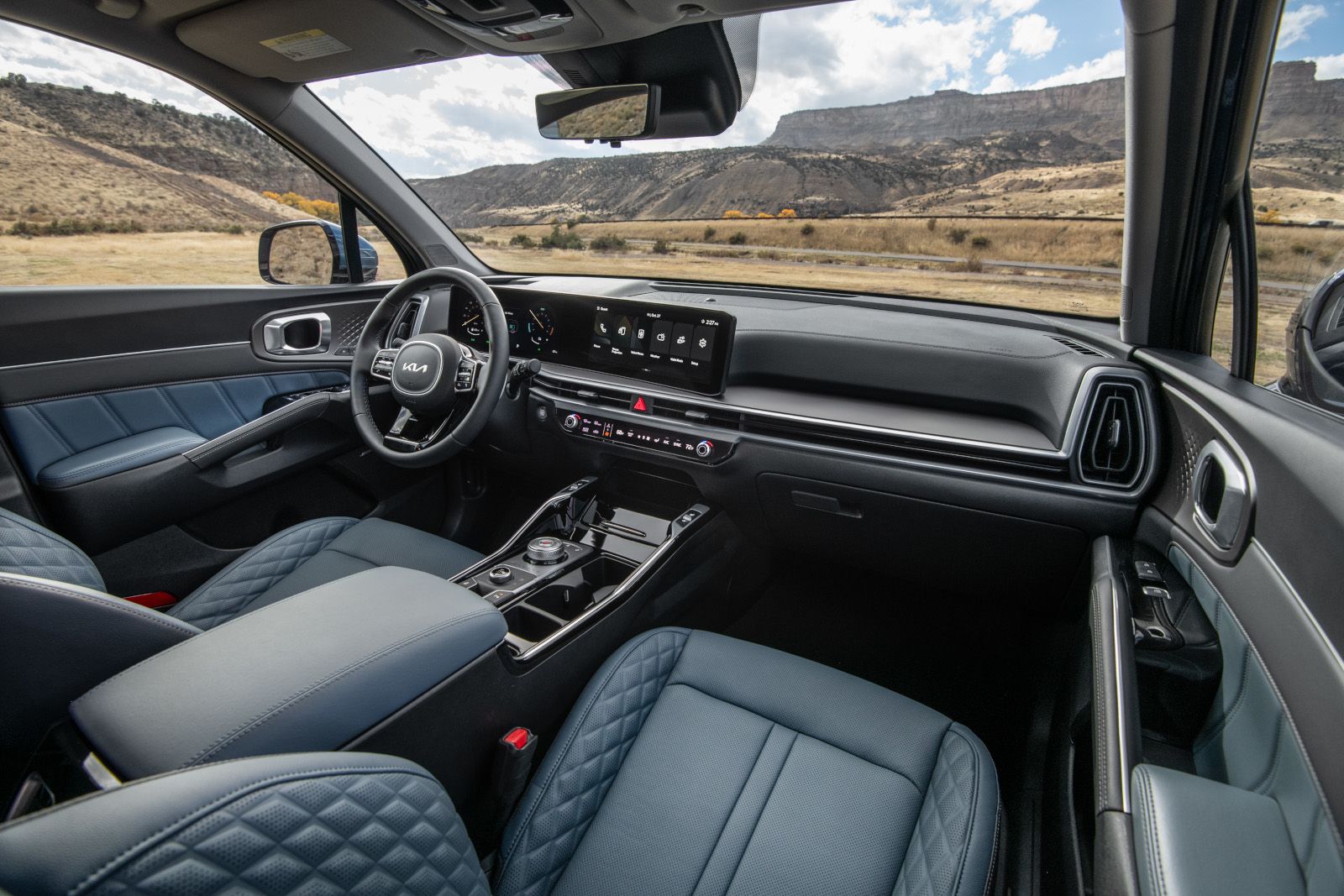
Both Sorento electrified models share the same spacious three-row interior layout, providing seating for six passengers with second-row captain's chairs. The 2,139 L of cargo space behind the first row ensures ample room for family gear, while the 357 L behind the third row accommodates daily essentials.
Technology features are identical across both models, including the 12.3-inch multimedia interface, smartphone integration through Apple CarPlay and Android Auto, and the available Bose premium audio system. The available 12.3-inch supervision LCD instrument cluster provides clear hybrid system information, showing energy flow and efficiency data.
Both models offer the same advanced safety suite, including Forward Collision Avoidance Assist 2, Highway Drive Assist 2, and the available Surround View Monitor system. The consistent feature set means families can focus on powertrain choice without worrying about losing interior amenities or safety technology.
Which Model is Right for You?
Choose the Sorento HEV if you want maximum simplicity and efficiency without changing your current driving habits. This model works best for families who take frequent long trips, don't have reliable access to charging, or prefer maintenance-free hybrid operation. The larger 67 L fuel tank provides extended range between fill-ups.
The Sorento PHEV makes sense for families with predictable daily routines and access to home or workplace charging. If your typical day includes short commutes, school runs, and local errands within 48 km, the PHEV can handle many trips using only electric power. The smaller 47 L fuel tank reflects the expectation that you'll rely more heavily on electric driving.
Consider your driving patterns carefully. Families who frequently drive less than 48 km per day will benefit most from the PHEV's electric-only capability. Those who regularly exceed this range or take spontaneous long trips might prefer the HEV's hassle-free operation.
PHEV Advantages:
- Up to 48 km of electric-only driving
- Higher combined power output (261 hp vs. 227 hp)
- Potential for significantly reduced fuel consumption on short trips
- Quieter operation during electric-only mode
HEV Advantages:
- No charging infrastructure required
- Larger fuel tank for extended range
- Lower purchase price
- Simpler operation with no range anxiety
Experience the Sorento at Plaza Kia
Both electrified Sorento models—the HEV and PHEV—offer compelling advantages for families in Ontario seeking three-row efficiency with hybrid technology. While the Sorento lineup also includes a traditional gasoline engine, these two hybrid powertrains provide the best combination of efficiency and capability. The decision between them often comes down to your daily driving patterns and charging access. Book your test drive today at Plaza Kia in Richmond Hill to experience both electrified powertrains and determine which fits your family's lifestyle best.
To learn more about the 2025 Kia Sorento HEV/PHEV, visit Kia.ca



